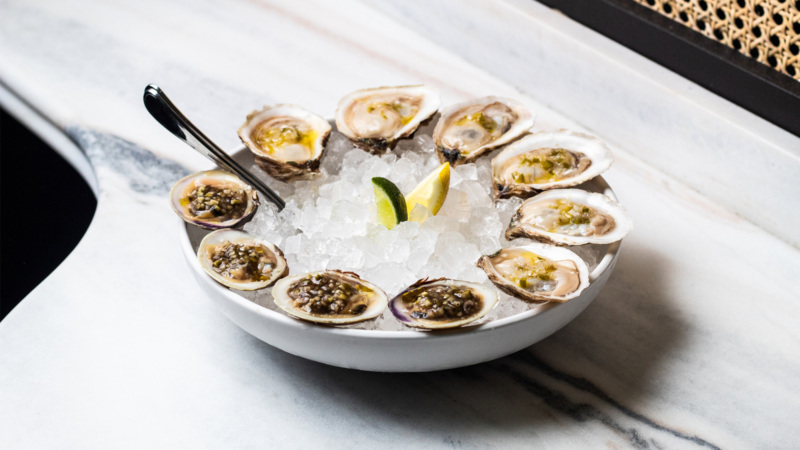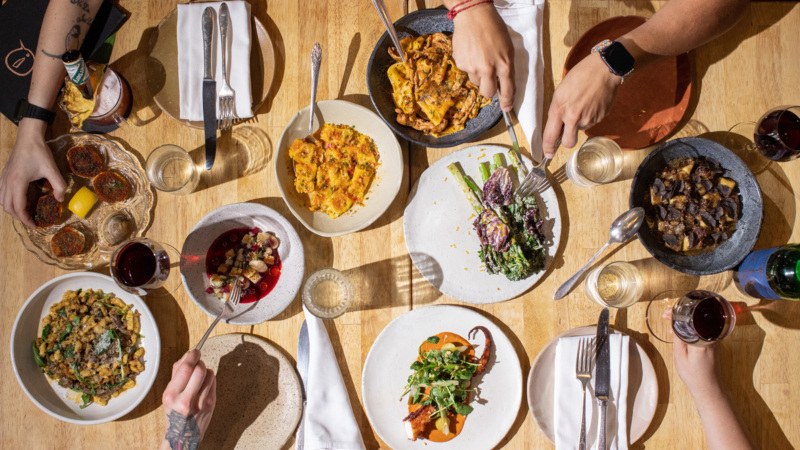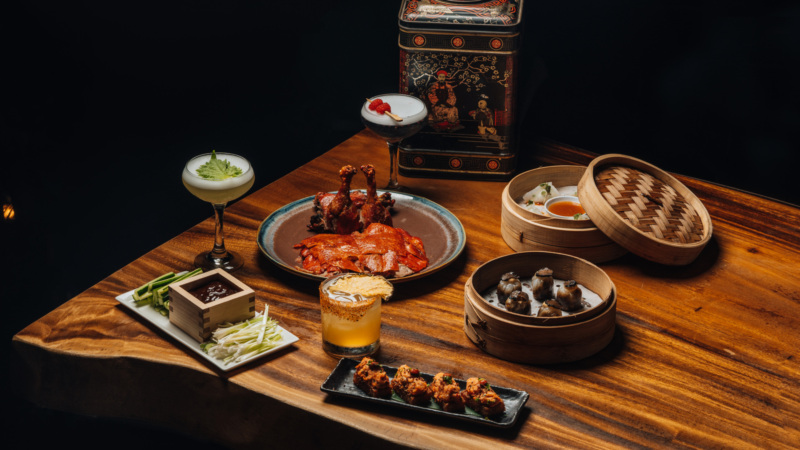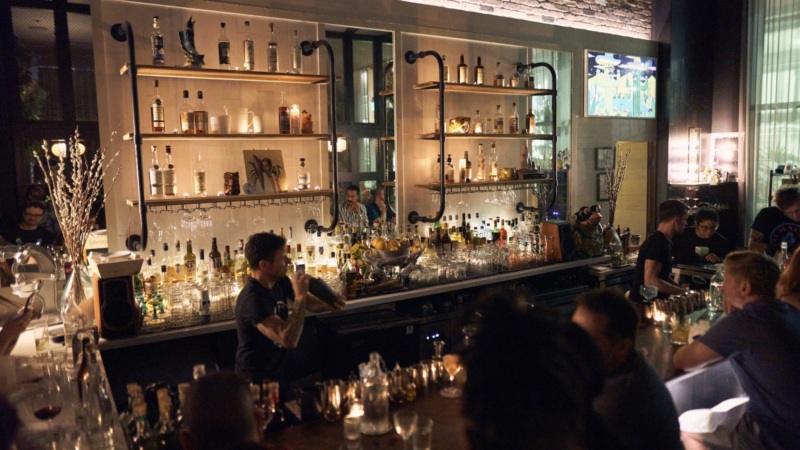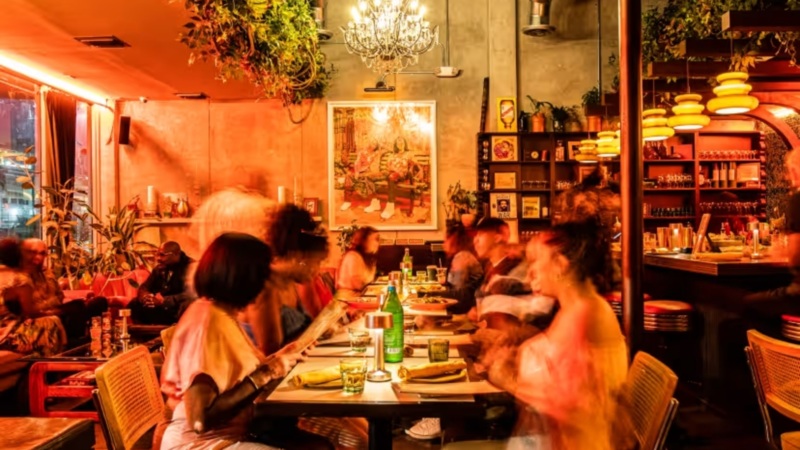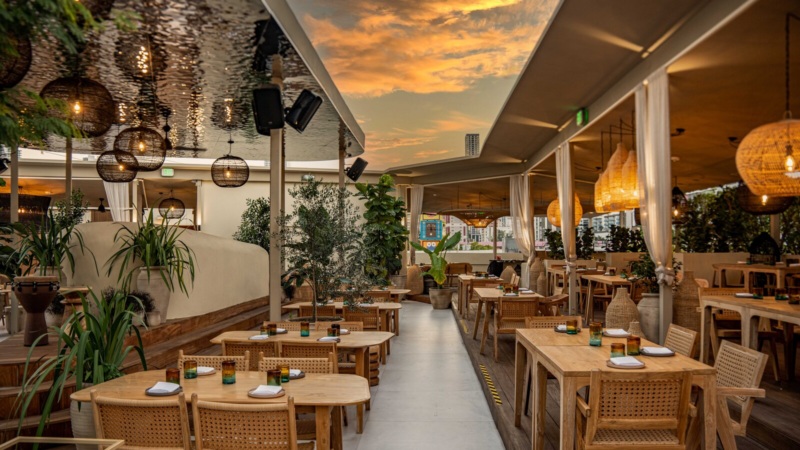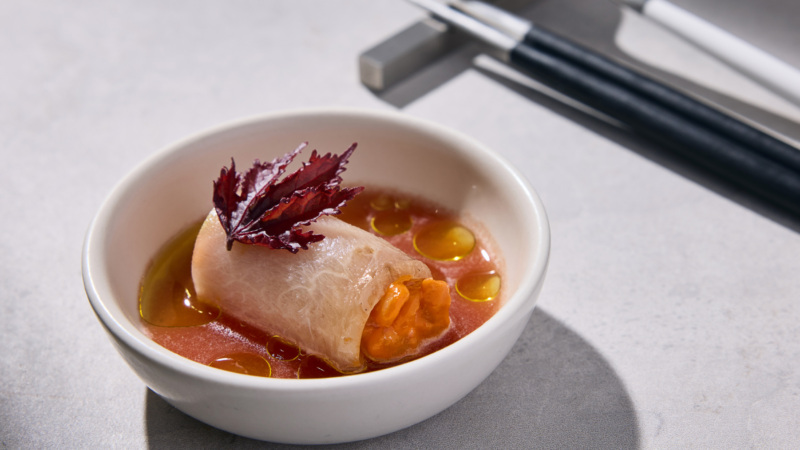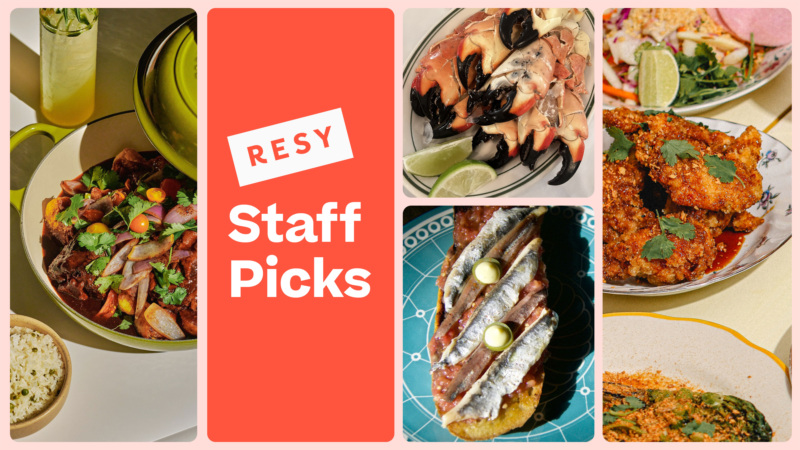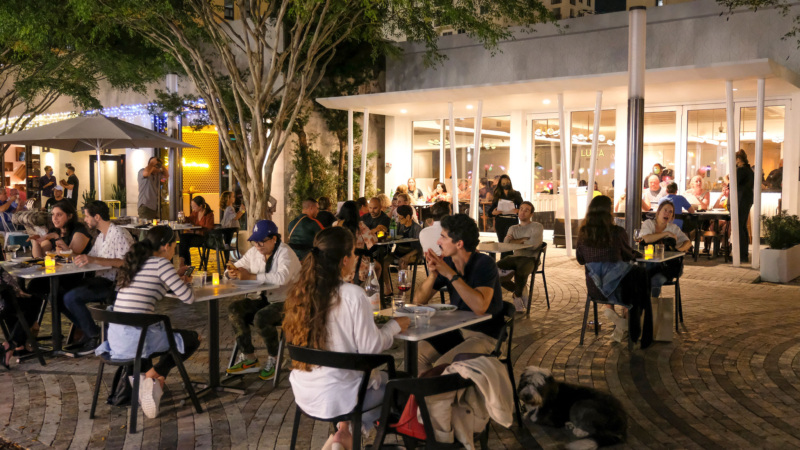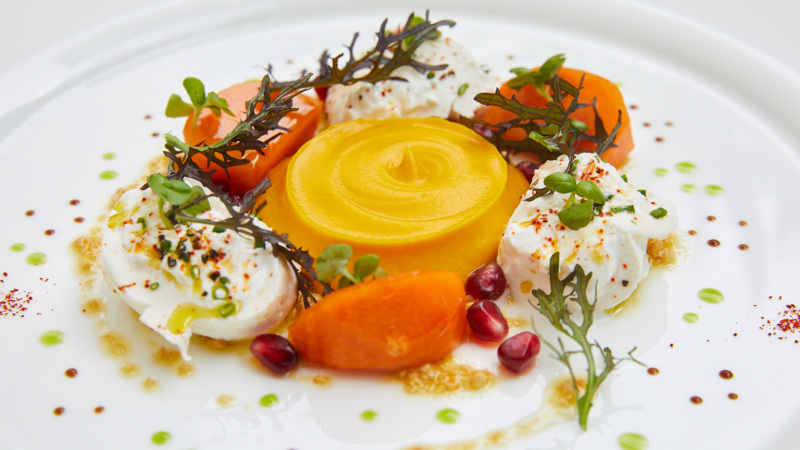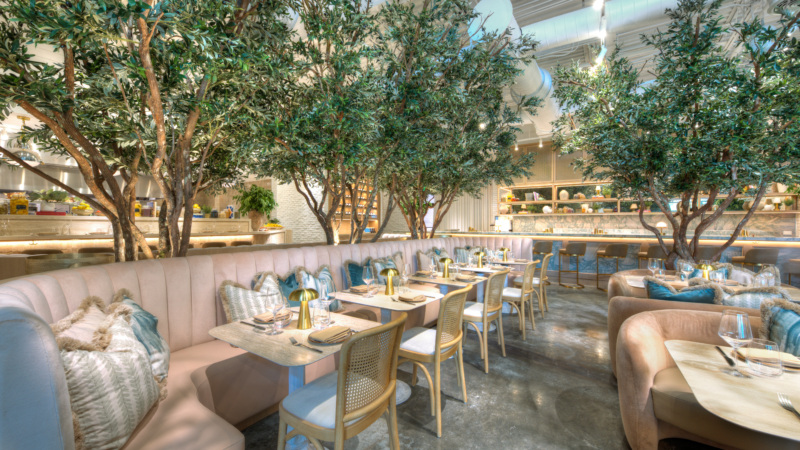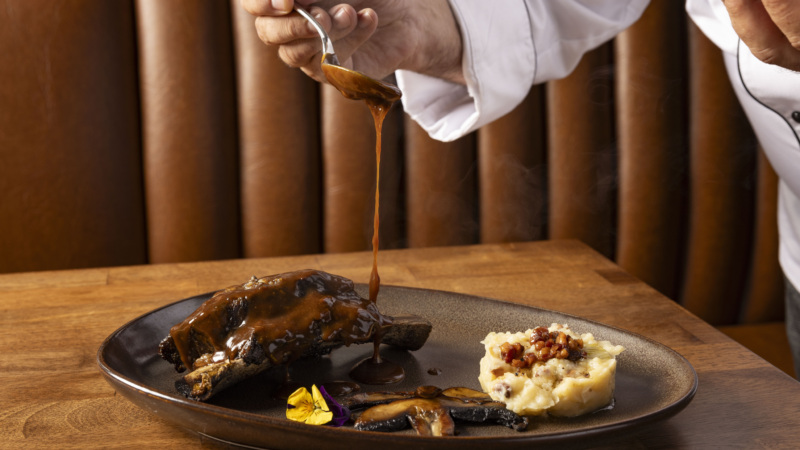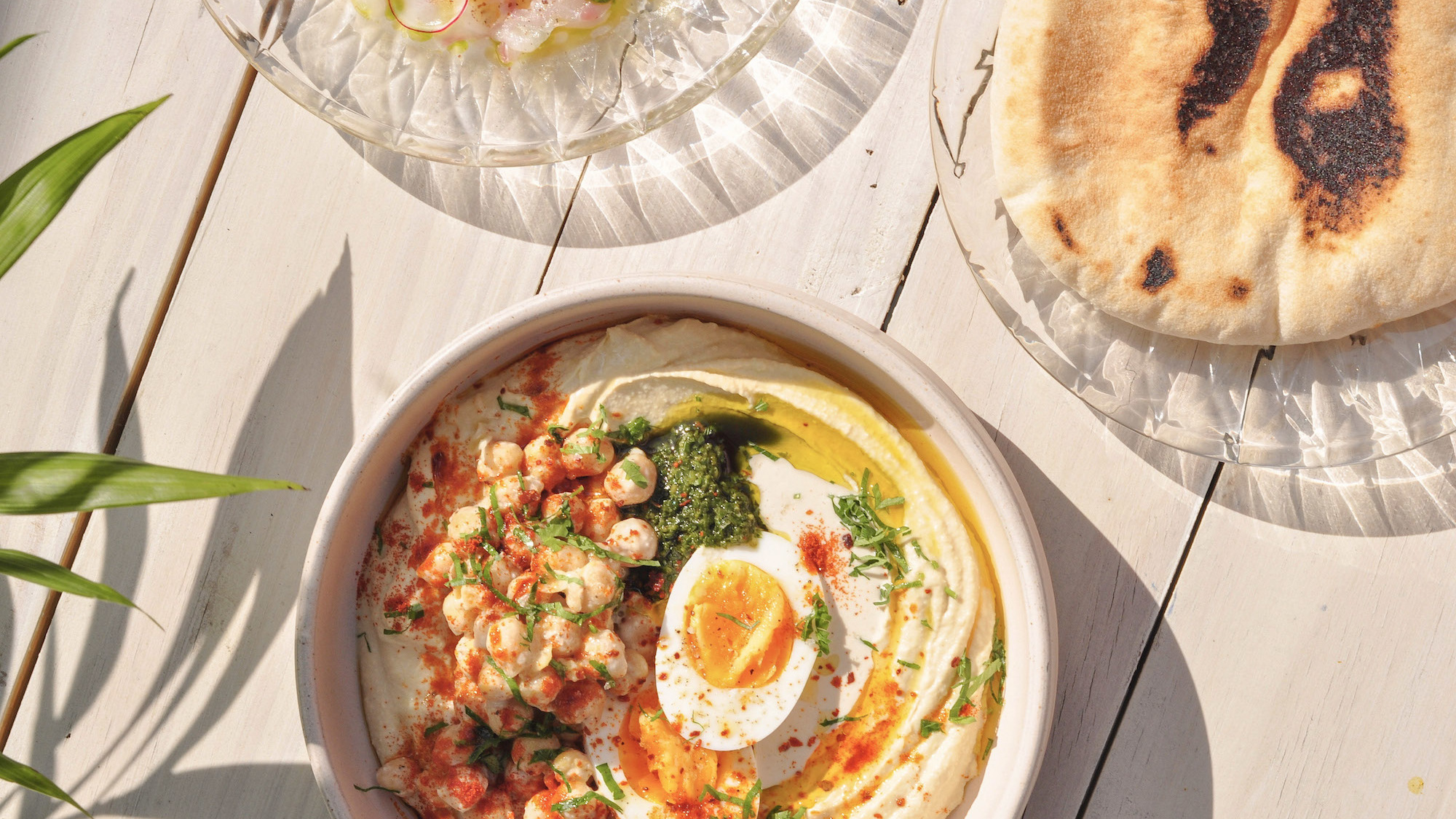
Five Things You Need to Know About Abbalé Telavivian Kitchen
Before you go to a restaurant, what do you want — or need — to know most? In our series The Rundown, we’re sharing all the essentials about Miami’s favorite restaurants, both old and new.
This time, we’re taking a look at newcomer Abbalé Telavivian Kitchen, opened by two hospitality veterans in March 2021.
Located in Miami’s tony South of Fifth neighborhood in South Beach, this new spot is modeled on the all-day cafes of Tel Aviv. Housed in a whitewashed cottage three blocks from the ocean and outfitted with pink bougainvillea vines, wicker chairs and pastel-colored velvet cushions, Abbalé Telavivian Kitchen has become wildly popular with the Instagram-your-latte set. Here’s a primer on what you need to know about this undeniably charming spot.
1. The cafe’s name has paternal roots.
The duo behind the cozy 50-seat spot — James Beard Award semifinalist Sam Gorenstein, chef at My Ceviche and Zuuk Mediterranean Kitchen, and Omer Horev, co-founder and CEO of the five-unit-and-expanding fast-casual Pura Vida Miami — are friends and fathers themselves, and decided to base the name on the word Abba, which means “father” in Hebrew. Horev is Israeli, while Gorenstein was raised in Colombia eating the Syrian food of his ancestors, but has traveled to Israel several times, becoming enamored with the multi-faceted cuisine of the land.
2. The concept is inspired by another beachy city.
The restaurant was born out of a mutual love of what Gorenstein calls “Tel-Aviv style cafes” — casual neighborhood spots bursting with style and energy emblematic of that beachfront city. “We wanted to capture the bohemian vibe that you find in Tel Aviv,” explains Gorenstein, as Mizrahi music — that melange of Israeli pop that incorporates North African vocals — plays over the sound system. “I truly believe Tel Aviv and Miami have so much in common. Both are coastal cities, architectural cities — Miami being Art Deco and Tel Aviv being Bauhaus. And both are filled with young people and nightclubs. So we wanted to bring those things together.”
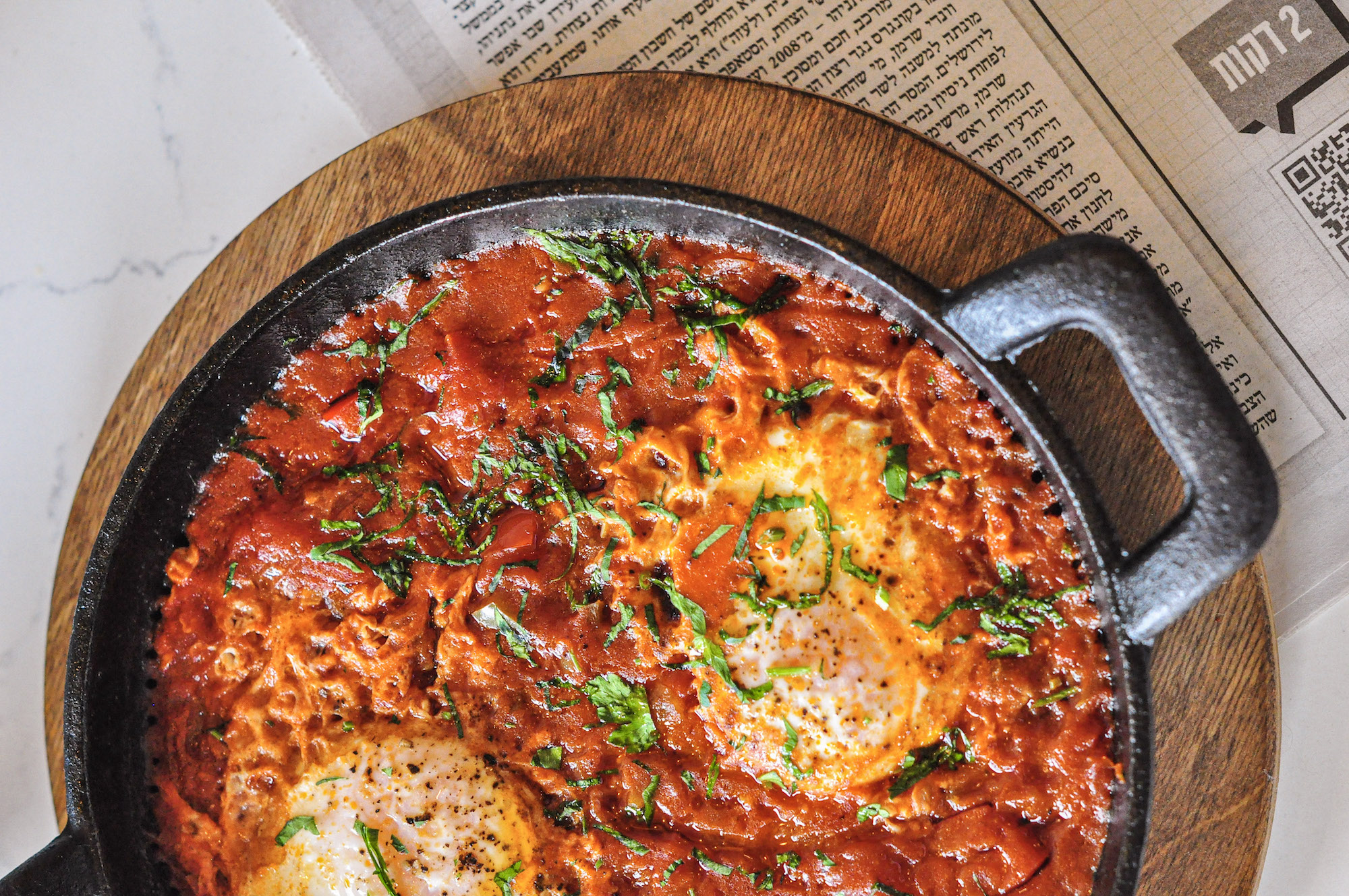

3. It’s all about Sunday brunch, lunch, and dinner.
Gorenstein’s culinary adventures in Israel helped broaden his understanding of the country’s various culinary traditions — the melting pot of flavors of the region brought by immigrants from throughout the Middle East, North Africa and Europe — and solidified his appreciation for the cuisine’s focus on fresh produce and strategic use of spice. The restaurant serves lunch, dinner,and Sunday brunch, as well as a sunset menu featuring nisnushim (snacks), coffee and tea, wines from boutique producers from the region with a focus on Israeli wines, and craft beers. The fluffy pita loaves are made in house, as are all the dips and baked goods (don’t sleep on the Nutella-laced babka bread) while the sesame-flecked “bagele” is a less-dense take on the chewy bread snack common in Middle Eastern markets, and made custom for the restaurant by local French baker Bettant Bakery.
Lunch is designed to be light and refreshing, dishes of sumac chicken shashlik served with laffa, a thicker, chewier pita often used to make a sandwich of kebabs and fire roasted whole branzino. Dinner is heartier, with Moroccan spiced local fish, a whole branzino with preserved lemon tapenade, and grilled lamb chops with fragrant rosemary chermoula. At brunch, Abba’s breakfast platter — served on a round tray and replete with arak-cured salmon, pickled vegetables, a small bowl of chopped cucumber-and-tomato salad, hummus, and olives — is an homage to the quintessential Israeli breakfast, all crunchy vegetables and protein with nary a pancake in sight. The classic shakshuka, served in a petite cast-iron skillet, is a melange of gently-poached eggs in a hearty spiced tomato and pepper sauce with just a hint of heat. A glass case displays pastries and borekas — phyllo dough turnovers filled with Bulgarian feta cheese or onion-flecked mashed potatoesIt’s all light and made for sharing, the ideal refueling station after a day at the beach.
4. ‘I’ll never have shawarma on the menu.’
Gorenstein insists he never wants his restaurant to be known as a shawarma and chicken schnitzel place — two street-food staples now ubiquitous at Israeli-influenced restaurants in America. “I’ll never have shawarma on the menu,” he proclaims. “I want to show people there’s another side to Israeli food.” That said, he does make an exception for falafel, serving the perfectly-crisp fried chickpea fritters in dainty silver bowls, topped with pickled red onions to cut the richness of the fry.
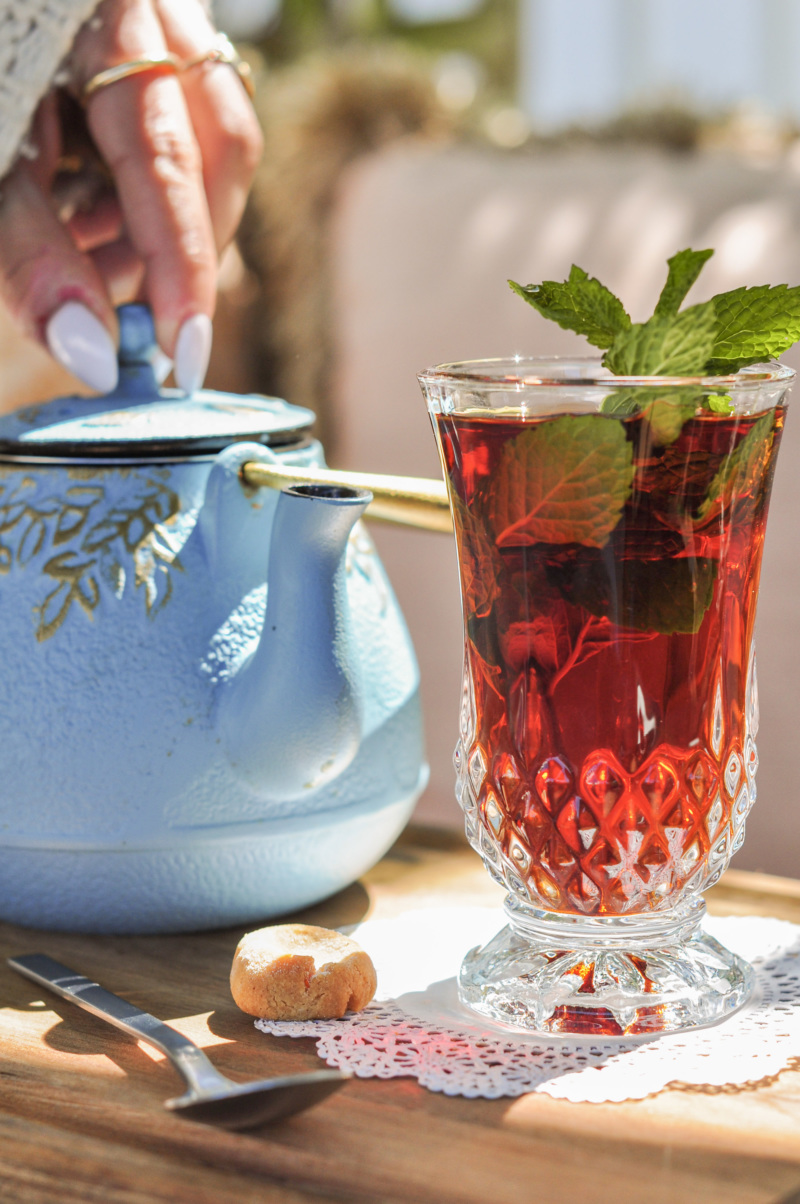

5. Other outposts may be coming soon.
There are plans to expand the concept with the support of Horev’s Pura Vida team. “We wanted to carve a niche for ourselves that was different from what’s out there, especially for breakfast,” says Gorenstein. “We felt there was a need we could fill in Miami to have a great breakfast spot. We’re trying to elevate the experience both in the kitchen and the front of the house. And yes, I think we have the right assets in place to open more.”


